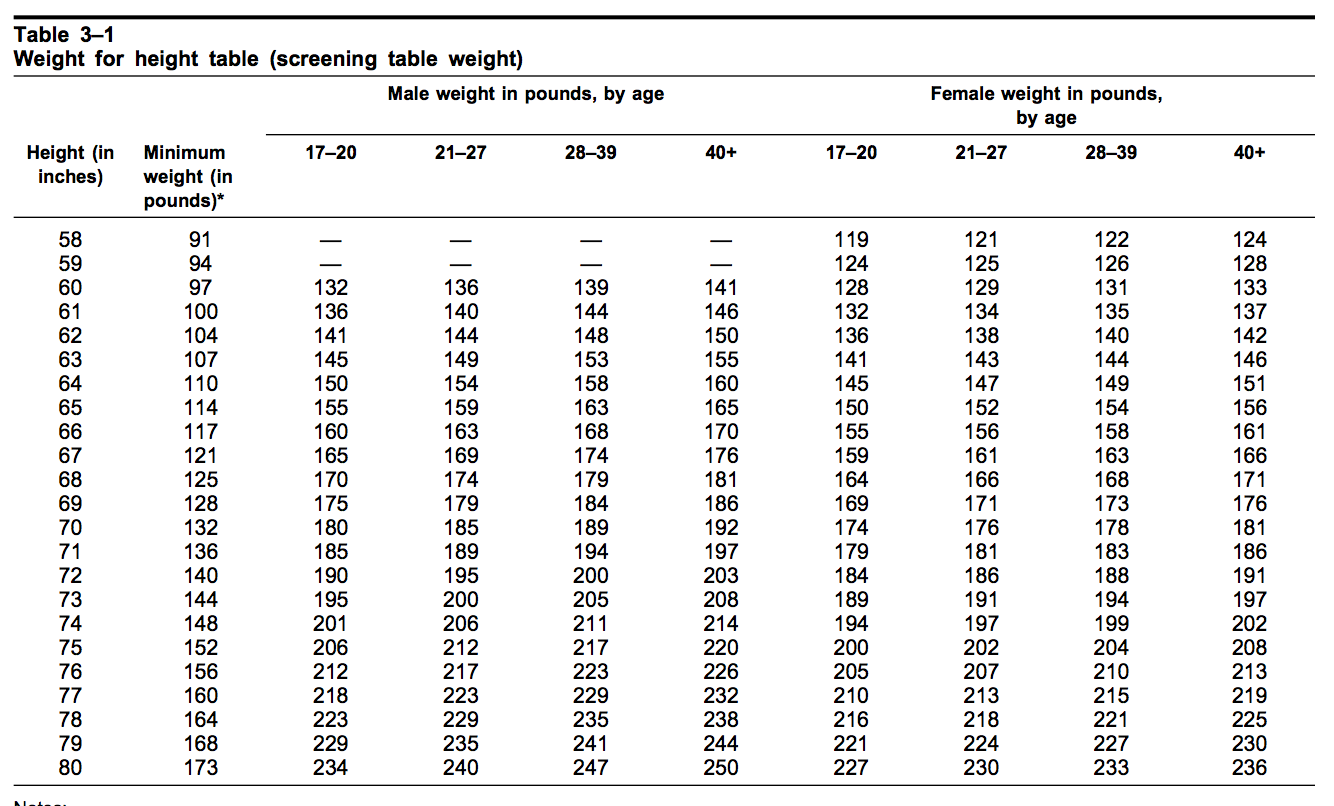

Understanding Height Weight Requirements For Army Service
The height weight requirements for army enlistment are crucial for maintaining a fit and effective military force. These standards ensure that all service members meet the physical demands of their roles, contributing not only to their personal readiness but also to the overall effectiveness of the army. Understanding these requirements is vital for potential recruits, as it can influence their eligibility and preparation for joining the military.
In the military, physical fitness is not merely a recommendation; it is a necessity. The height and weight requirements for army service are established to ensure that all enlisted personnel can perform their duties effectively while minimizing the risk of injury. This article will delve into the specifics of these requirements, providing guidance for aspiring service members and insights into how these standards are applied across different branches of the military.
As we explore the height weight requirements for army enlistment, it is essential to recognize that these criteria can vary based on factors such as age, gender, and branch of service. By understanding these requirements, potential recruits can better prepare themselves for a successful application process and a rewarding career in the military.
What Are the Height Weight Requirements for Army Enlistment?
The height and weight requirements for army enlistment are designed to ensure that all recruits are physically capable of handling the rigors of military service. Generally, these requirements are outlined in a chart that specifies the acceptable weight range corresponding to a recruit's height, age, and gender. The following are the general height and weight standards for army enlistment:
- Height: Ranges from 58 inches (4'10") to 80 inches (6'8")
- Weight: Varies based on height, but must fall within the acceptable range
For example, a male recruit who is 5'10" (70 inches) should weigh between 140 to 200 pounds, depending on age. Female recruits have slightly different standards, typically requiring a lower weight for the same height.
How Are Height and Weight Measured in the Army?
The army employs standardized methods for measuring height and weight to ensure consistency across all recruits. Height is measured without shoes and recorded to the nearest quarter inch, while weight is taken using a calibrated scale. The results are then compared against the army's height weight requirements for army service.
What Happens If a Recruit Does Not Meet the Requirements?
If a potential recruit does not meet the height weight requirements for army enlistment, they may be given the opportunity to lose weight before reapplying. However, repeated failure to meet these standards can lead to disqualification from service. It is crucial for aspiring soldiers to begin their fitness journey well in advance of their enlistment date to ensure compliance with these requirements.
Are There Exceptions to the Height Weight Requirements for Army?
Yes, there are exceptions to the height weight requirements for army service. Certain factors such as body composition, physical fitness levels, and even medical conditions can influence eligibility. The army also has a body fat percentage standard that may allow individuals with a higher weight but lower body fat percentage to qualify for enlistment.
How Can Recruits Prepare to Meet the Height Weight Requirements for Army?
Preparing to meet the height weight requirements for army enlistment involves a combination of proper nutrition, exercise, and lifestyle changes. Here are some tips for potential recruits:
- Establish a Balanced Diet: Focus on whole foods, lean proteins, fruits, vegetables, and whole grains while limiting processed foods and sugars.
- Develop a Fitness Routine: Incorporate cardiovascular exercises, strength training, and flexibility workouts into your routine to improve overall fitness.
- Track Progress: Regularly monitor your weight and body measurements to stay on track and make necessary adjustments.
- Consult Professionals: Seek advice from nutritionists or personal trainers who specialize in military fitness training.
What is the Role of Body Fat Percentage in Height Weight Requirements for Army?
Body fat percentage plays a significant role in the height weight requirements for army service. The army employs a separate body fat standard that considers a recruit's body composition, allowing individuals with a higher weight but lower body fat percentage to enlist. This standard is especially important for those who may possess a muscular build but are otherwise fit for military service.
Conclusion: Meeting the Height Weight Requirements for Army
In summary, the height weight requirements for army service are designed to ensure that all recruits meet the physical demands of military life. By understanding these requirements and taking proactive steps to achieve them, potential recruits can enhance their chances of a successful enlistment. Emphasizing fitness, nutrition, and overall wellness will not only help aspiring soldiers meet these standards but also prepare them for the challenges that lie ahead in their military careers.
You Also Like
Unveiling The Mystery Of Mike Rowe's Wife AgeKennesaw State University Application Deadline For Fall 2025: Everything You Need To Know
Remembering Jon Erik Hexum: A Life Cut Short
Honoring Memories: Remembering Dad On His Death Anniversary
Unraveling The Life And Legacy Of Inge Posmyk



